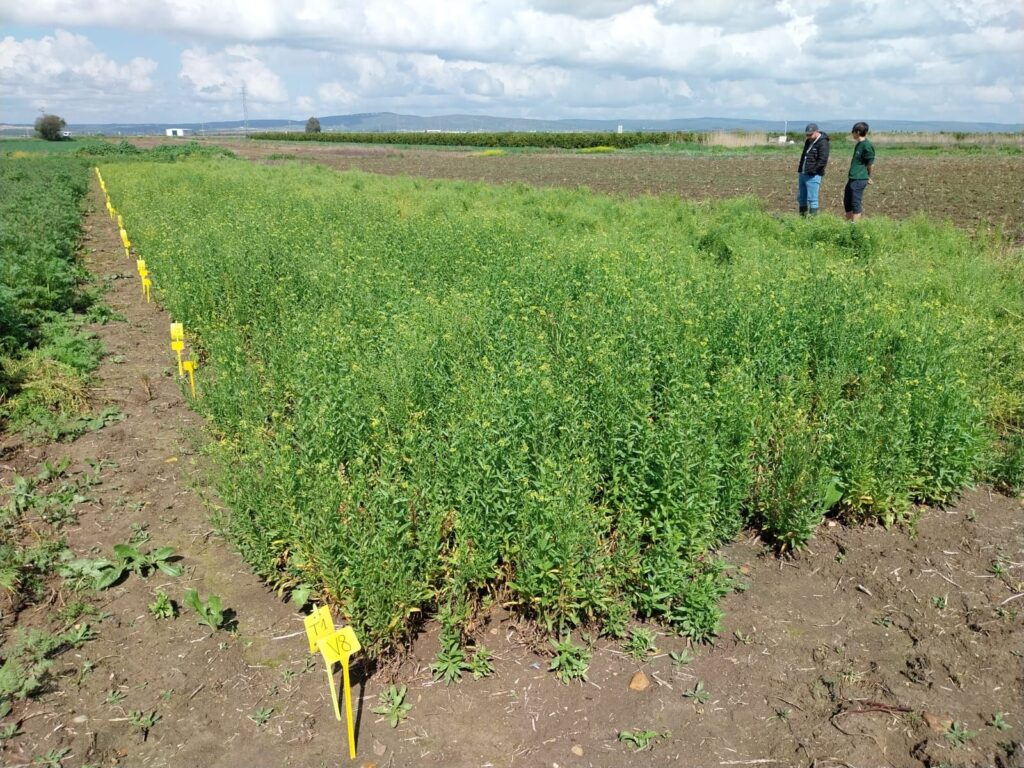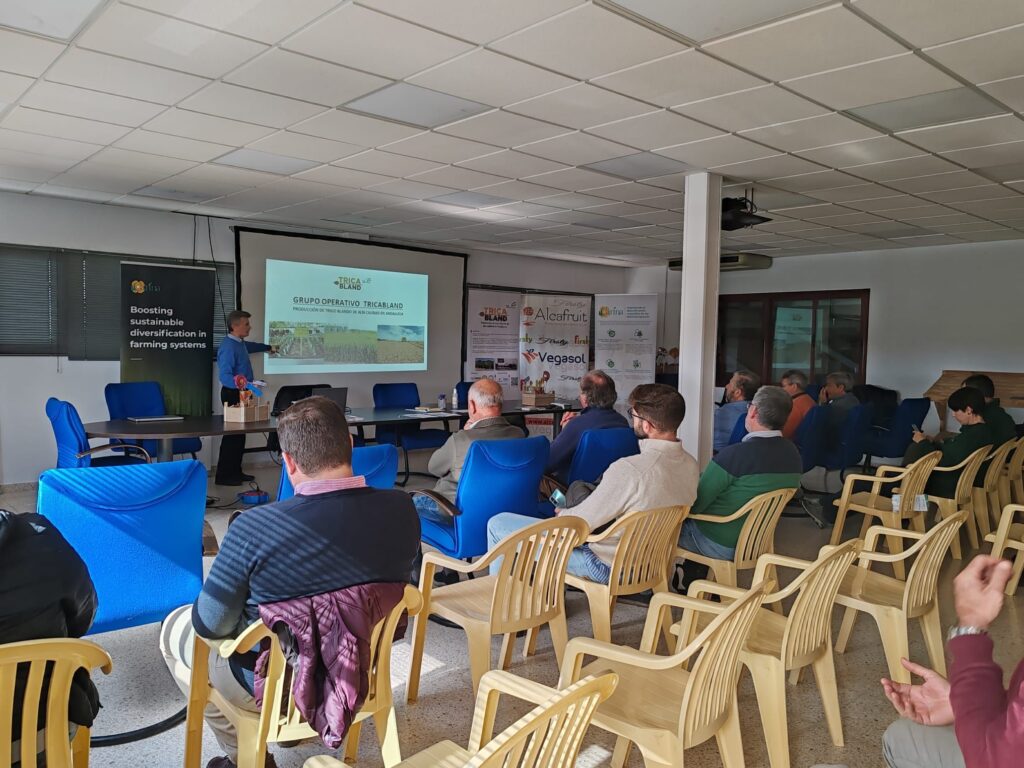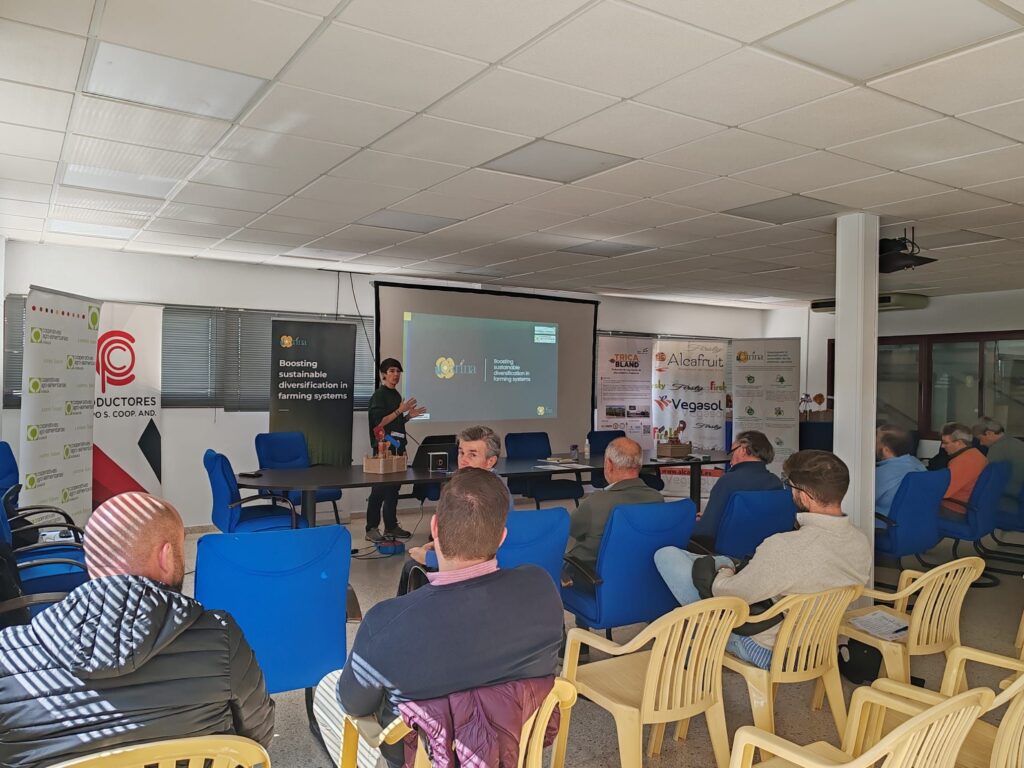On March 7, 2025, the CARINA Project was presented at the Cereal Sector Transfer Day in Alcalá del Río, Spain, organized by Cooperativas Agro-alimentarias de Andalucía in collaboration with camelina Company and Agricultuta y Ensayo. The event, held at the Productores del Campo cooperative, highlighted the challenges facing Spain’s cereal and oilseed sector and explored innovative solutions like camelina and carinata cultivation.
As part of CARINA, camelina trials are currently underway in Carmona and Alcalá del Río, covering 10 hectares. Camelina is a autumn-sown oilseed crop that requires minimal inputs, making it a sustainable and cost-effective alternative for farmers. The crop is particularly drought- and frost-tolerant, has a short growth cycle, and needs lower fertilization levels than cereals, making it an attractive option for agricultural diversification.

During the event, Fernando Gil, Technical Services Coordinator at Camelina Company, emphasized camelina’s potential as a low-input crop with multiple applications, particularly in bio fuel production. Farmers in attendance expressed strong curiosity about camelina’s field management, agronomic benefits, and market opportunities.
Currently, camelina is cultivated on 2,500 hectares across Spain, but its potential expansion into sustainable bio-based industries, including biofuels and bioproducts, makes it an exciting option for the future. The new ReFuelEU Aviation legislation set the required Sustainable Aviation Fuels level for 2030 at 6 %. In order to reach this target, approximately 2.76 Mtoe of SAF would be required, while the potential SAF production capacity in 2020 in the EU was around 0.24 Mtoe, i.e. only 9 % of that amount (Source: ECA)

By supporting events like the Cereal Sector Transfer Day, CARINA continues to engage with farmers and stakeholders, providing insights into innovative cropping systems that can help shape the future of sustainable agriculture in Spain and beyond using oilseed such as camelina and carinata.

SUBSCRIBE TO A NEWSLETTER
Funded by the European Union. Views and opinions expressed are however those of the author(s) only and do not necessarily reflect those of the European Union or the European Research Executive Agency. Neither the European Union nor the granting authority can be held responsible for them.